Lower James River Catfish Study
Why study catfish on the lower James River?
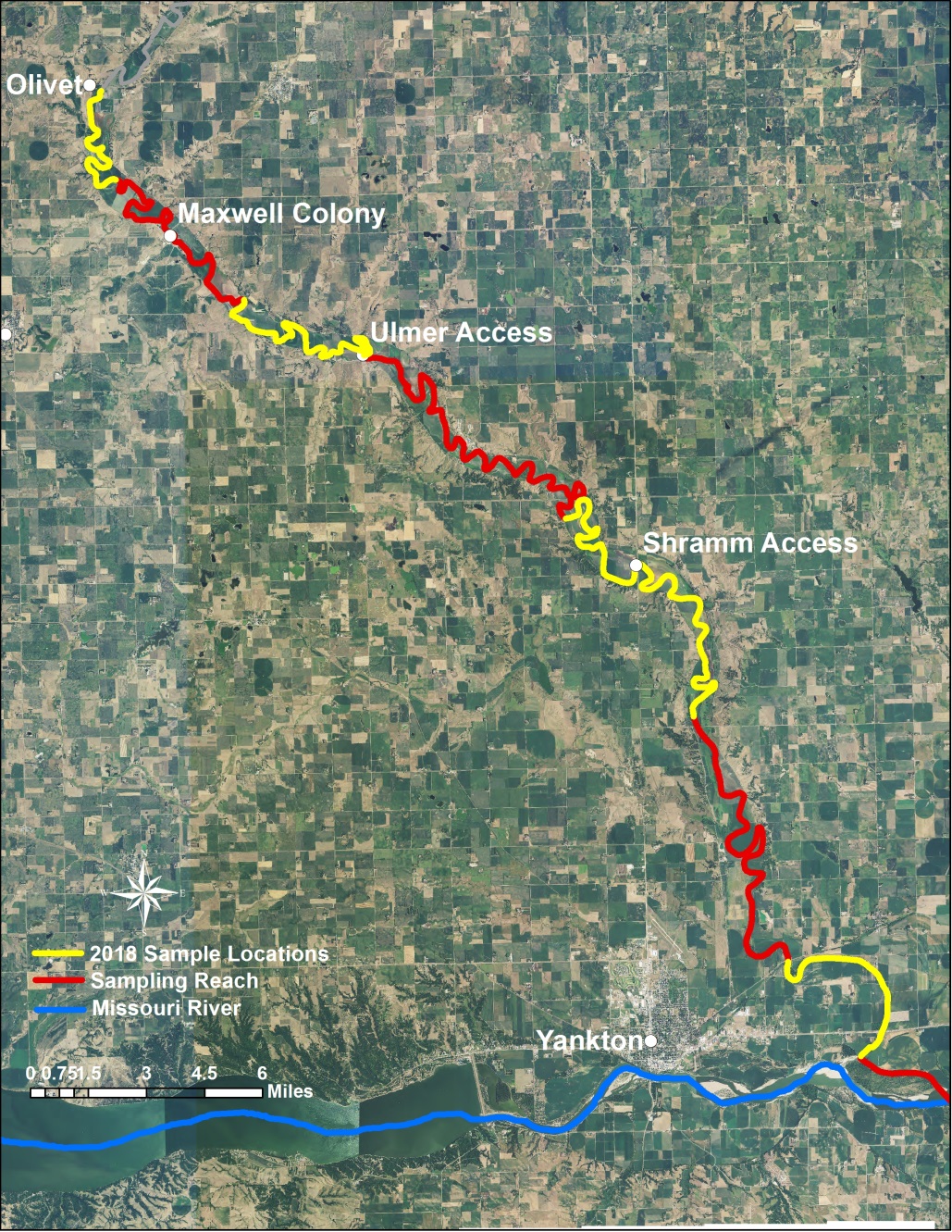
For years anglers concerned about the potential over-harvest of trophy catfish on the James River have inquired about implementing more restrictive regulations, especially for Flathead Catfish. Since catfish populations in the lower James River have not been formally studied since 2000, a new study to obtain up to date information on growth, age structure, annual mortality and recruitment was initiated in 2018. This information will be used to predict the effects of various regulations on catfish populations. Catfish have also be tagged so the percentage of the population harvested by anglers each year (exploitation) can be determined. Tagging will provide information on catfish abundance and movements, too.
Where is this study taking place?
Fish were collected from the James River at sites from the Missouri River confluence to Olivet, SD. Information from angler-caught catfish was also collected from tournaments held at locations such as Yankton, Scotland and Milltown. Sampling will be repeated at these sites in 2019.
How can anglers report a tagged fish?
Signs are displayed at multiple access points along the James River informing anglers about the tags, rewards and the reporting process. Report a tagged fish online or call 605.367.4941.
Anglers do not have to harvest the fish to claim the reward. However, physical proof must be provided before reward tags can be paid. Pictures of the tag can be included on the online tagged fish form or tags can be physically presented to GFP staff at 4500 S. Oxbow Ave, Sioux Falls, SD. Tags will only be paid out once and before the reward period expires on December 31, 2020.
What information was collected from the fish in 2018?
We sampled catfish from May through early September in 2018. We caught 852 Channel Catfish and 1,148 Flathead Catfish of a wide range of sizes with the smallest individuals of both species measuring less than 2 inches long. The biggest Channel Catfish caught measured 31 inches long and weighed just over 13.5 pounds, while the biggest Flathead Catfish measured 44.5 inches and weighed 47.8 pounds. The length-frequency histograms show the number of each species collected by inch group (Figure 1).
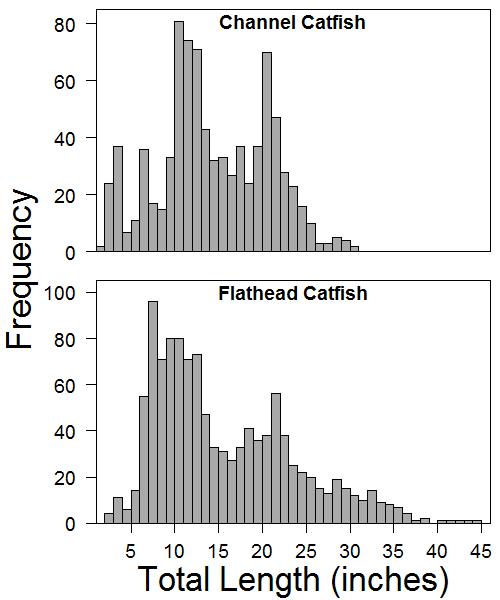
We removed pectoral spines from 382 Channels and 392 Flatheads to determine their ages. Knowing the age of our sampled fish helps us determine how fast they are growing and what percentage of fish are dying each year (mortality rate). We plan to age more fish in 2019 in order to improve our estimates of growth and mortality rate. The spines collected in 2018 have been processed, are ready to be aged, and will be examined this winter.
What information was collected from tagged catfish in 2018?
We only tagged catfish larger than 12 inches, the minimum size that an angler would be likely to keep. A total of 388 Channel Catfish and 567 Flatheads were tagged with 10% of those tags having a $100 reward, 60% having a $10 reward, and 30% having no reward. Over the course of 2018, anglers reported catching two tagged Channel Catfish and 11 tagged Flathead Catfish. Both of the Channel Catfish and only 3 of the 11 Flathead Catfish were harvested.
We also gained a little insight into movement (or lack thereof) by looking at where a fish was tagged and where it was recaptured by an angler or during our sampling. Overall, we had 100 recaptured Flathead Catfish, and 96 fish were recaptured in the same sampling stretch where they were originally tagged. One Flathead Catfish made a large movement from Olivet to the 309th street (Old Hwy 50) bridge near Yankton while three Flathead Catfish moved short distances from the stretch above to the stretch below Shramm Access. Flathead Catfish appear to have small home ranges moving very little during the course of the summer. Only four Channel Catfish were recaptured, so we weren’t able to identify any movement patterns. However, one Channel Catfish moved about 60 miles from Olivet to the Vermillion-Newcastle Bridge over the Missouri River.
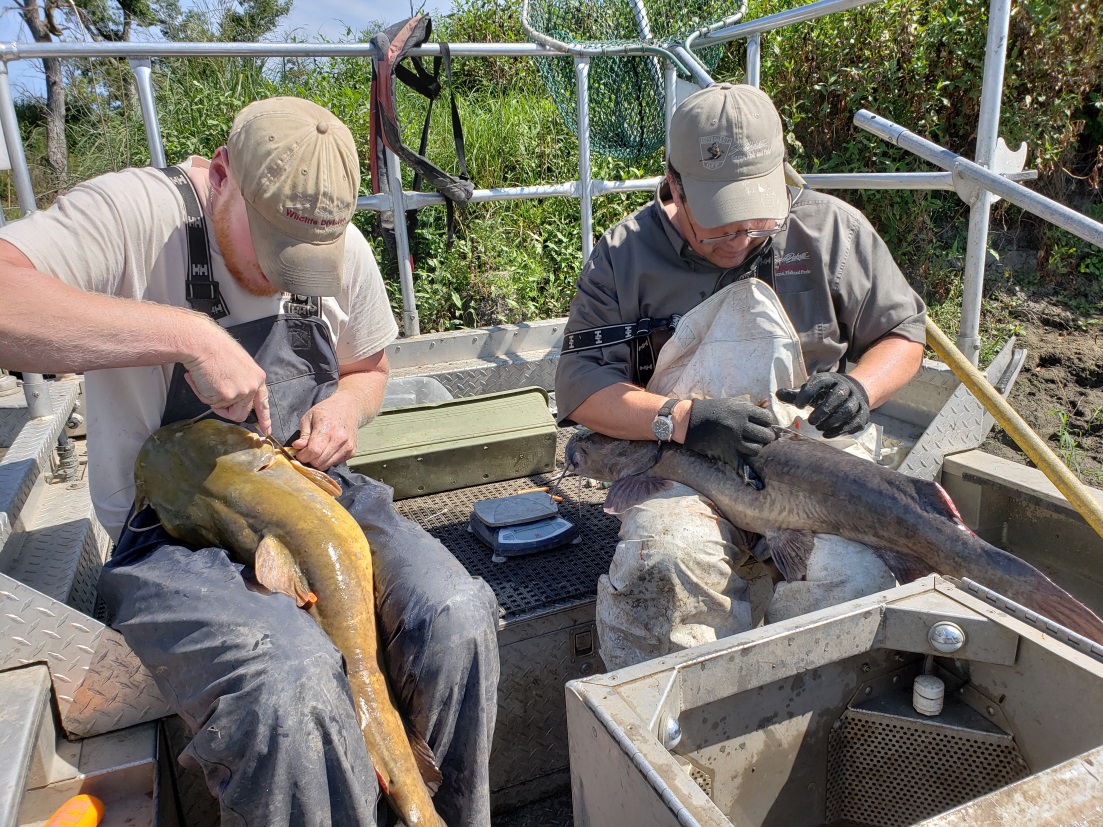
GFP biologists processing catfish caught on the James River.
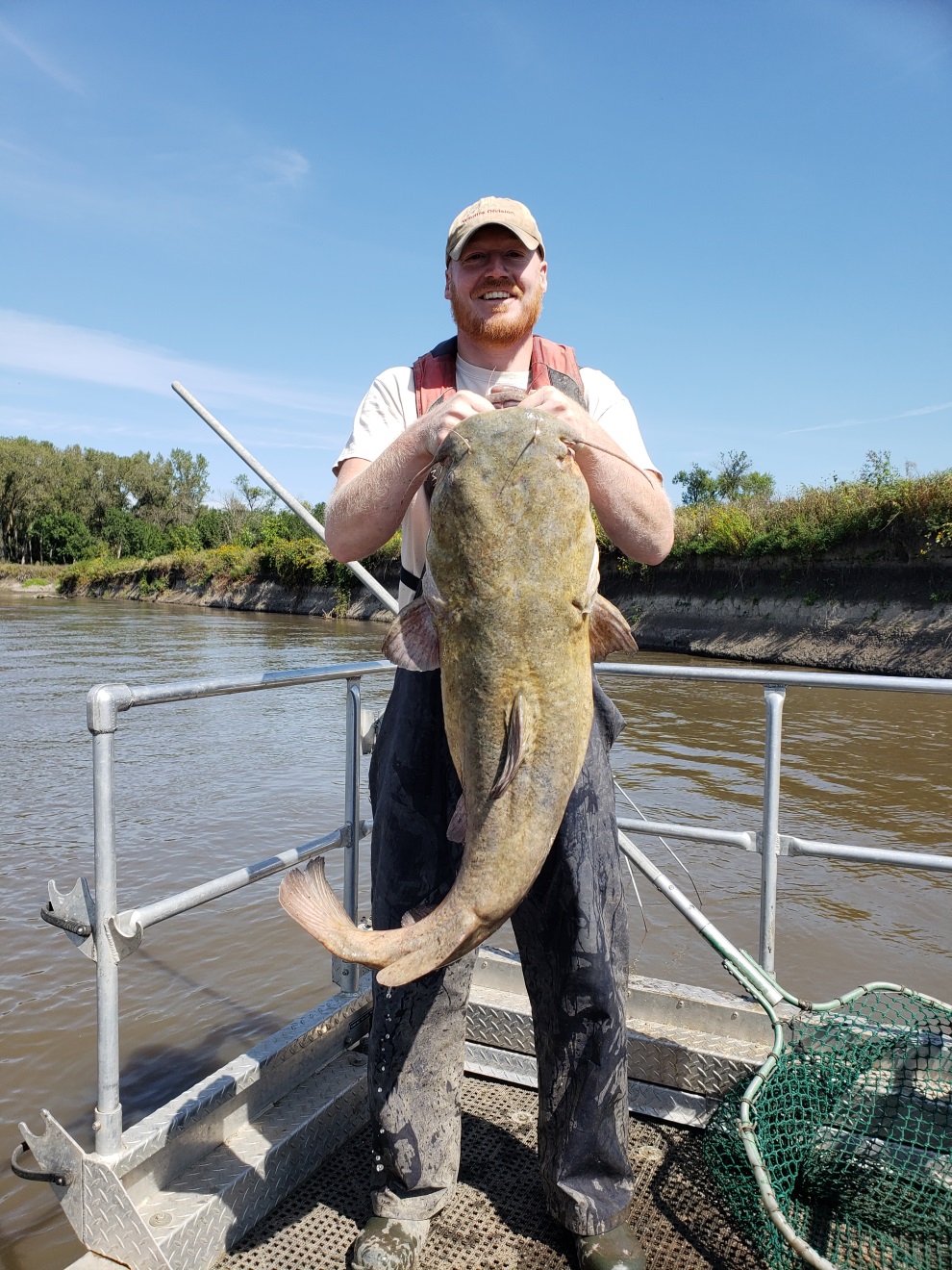
One of the largest Flathead Catfish caught by GFP staff in 2018 on the James River.
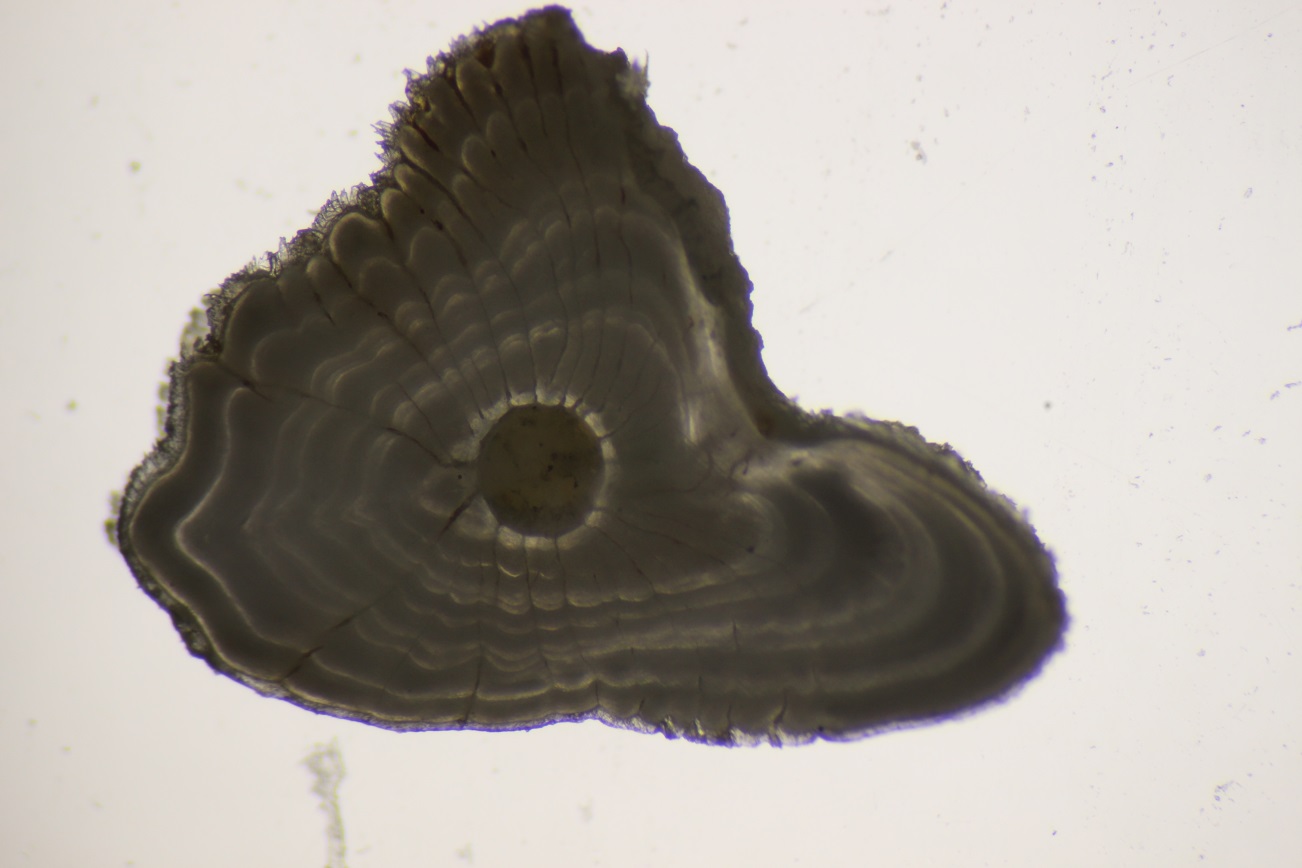
Section of a pectoral spine from a Channel Catfish.

